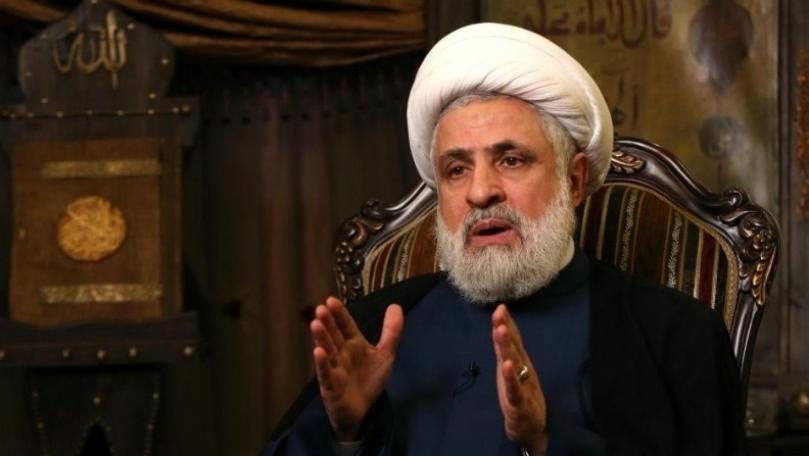Gareth Smyth
Daily Star
In 1993, northeast of Halabja in northern Iraq, I saw a pickup truck coming the other way along a mountain road. It was driven by a member of Iran’s Revolutionary Guard. It was no great surprise. Amid the detritus and scars of the 1980-1988 Iran-Iraq war, the border was porous and a variety of armed men were moving around.
Tehran was keen to keep a hand on the Iraqi Kurdish parties who had managed de facto autonomy since Saddam Hussein had withdrawn his forces in 1991. There were also Peshmerga guerrillas of the Kurdistan Democratic Party of Iran slipping into Iran to keep their struggle for autonomy alive.
High in the Hawraman mountains, the “almond villages” of Biyara and Tawella had once been places of summer picnics for families from Halabja, 35 km to the southwest, and the larger city of Sulaimaniyah, 95 km west. But the almond trees, like the buildings, had not survived years of battles between Iran and Iraq and between Iraq and Kurdish guerrillas. Remaining villagers relied on United Nations food supplies as they waited the five or six years it would take the newly planted almond trees to bear fruit.
Halabja – known internationally for the March 1988 Iraqi chemical attack in which some 5,000 Kurdish civilians died – was already a stronghold of the Islamic Movement of Kurdistan, and while the mainly Sunni Kurds were never natural allies of the Shiite authorities in Tehran, the following years brought Iranian support for Islamic groups in this part of Iraq, largely to keep pressure on the Patriotic Union of Kurdistan, the Iraqi Kurdish faction controlling this half of northern Iraq.
While IMK made peace with the PUK, a militant offshoot called Ansar al-Islam in 2001 took control of the almond villages – which given the local geography were relatively easy to fortify – and imposed a draconian version of Islamic law.
A senior PUK official told me one look at the map would reveal Ansar al-Islam must have Iranian support, especially in moving fighters along the border in fighting the PUK. When I interviewed Sheikh Sadiq Abdul Aziz, the deputy IMK leader, in Halabja in February 2003, he said the young men of Ansar al-Islam were “living in an imaginary world” having “learned to act like Osama bin Laden from the Internet and television.”
But for many Ansar al-Islam militants, some of whom had fought in Afghanistan, the struggle was anything but imaginary. For Washington in early 2003, waging the “war on terror” and preparing the invasion of Iraq, Ansar al-Islam’s real or alleged links to Al-Qaeda were a Godsend. Colin Powell, the secretary of state, made dramatic allegations of an Ansar al-Islam poison and explosives center at Biyara, and of an Iraqi agent in its leadership.
Iran was wary. It looked forward to Saddam’s removal but was uncomfortable over American troops so close to home, and so opted for a level of tacit cooperation with Washington.
In March 2003, U.S. cruise missile strikes on Tawella and Biyara vaporized bunkers where jihadists manned machine-guns. But it still took an uphill three-day ground attack by PUK Peshmerga directed by U.S. special forces and supported by U.S. helicopter gunships, to overcome Ansar al-Islam.
Some Ansar fighters crossed the border, but many perished as Iran closed it off. One villager gave me a gruesome account of how one jihadist, his leg severed, bled to death because Iranian guards wouldn’t let him through.
Survivors would regroup and Ansar al-Islam, or its offshoots, carried out some of the worst atrocities in the early years of the Iraqi insurgency. Attacks on Shiite civilians included killing a senior aid to Ayatollah Ali al-Sistani, Iraq’s senior Shiite cleric.
But Iran was now anxious to support the Shiite-led order emerging in Baghdad where the Iraqi Kurds played a generally supportive role.
Tehran recalibrated its efforts in northern Iraq, and relations with the Iraqi Kurdish leadership, whose rule was consolidated in the Kurdistan Regional Government, became more formal. Trade expanded. Nawsherwan Mustapha, then a senior PUK official, told me in early 2005 that Iran was no longer backing Ansar al-Islam. “We can draw certain conclusions from the fact that the border area [with Iran] is quiet,” he said.
But at the same time, Kurdish autonomy in Iraq stirred interest among Iran’s own 7-8 million Kurds, and Iran’s deepest concern with Kurdish issues had always been its own population.
Within Iran, Kurds were watching Iraqi Kurdish television stations and celebrating the election of a Kurd, Jalal Talabani, as president of Iraq. But for Iranian Kurds, Mohammad Khatami’s reformist administration had delivered nothing in recognizing the Kurdish language, including in education. Kurds felt they were discriminated against in government jobs and investment, and they resented the heavy presence of the army and Revolutionary Guard.
Turnout was low in Kurdish areas as Mahmoud Ahmadinejad won the 2005 presidential election evoking overtly Shiite themes, especially the anticipated return of the 12th imam from occultation. The reformist candidate Mostafa Moein made little headway with a campaign that included posters of people in ethnic, including Kurdish, dress.
However successful Ahmadinejad’s populist Shiism was in much of Iran, it reminded the mainly Sunni Kurds of what many felt was their second-class status. Slowly a new Kurdish group, Pejak, extended an armed campaign launched in 2004, stepping into a void left by the KDPI which abandoned its “armed presence” in the 1990s under pressure from the PUK, so as not to provoke Iranian attacks into northern Iraq. After the KDPI split in two in 2006, its support appeared to ebb away to Pejak.
Pejak’s close relationship with the Kurdistan Workers Party (PKK), which fought a two-decade struggle against Turkish forces until a cease-fire last year, complicates the mix. On the one hand, Pejak’s intermittent attacks on Iranian forces sparked a major Iranian offensive in the Qandil mountains inside northern Iraq in 2011, and led to Pejak declaring a truce.
But on the other hand, some in the Turkish media allege Iranian intelligence – especially the Quds arm of the Revolutionary Guard led by Qassem Soleimani – liaises closely with the PKK in Qandil, and is especially concerned to help the PKK offshoot in Syria, the Democratic Union Party, which stands aloof from the Syrian opposition and maintains a relationship with Iran’s ally President Bashar Assad.
Iran’s Kurds remain less than enthusiastic citizens of the Islamic Republic. This is a volatile situation in an area where its history of relations with Ansar al-Islam shows Iran the dangers of having its fingers burned after stoking others’ fires.
Of those who voted in last year’ presidential election in Iran’s Kurdistan province (smaller than the mainly Kurdish region), 70 percent opted for Rouhani. This was way above the 51 percent in favor across Iran. But it would be a mistake to see this as an enthusiastic endorsement.
Last October, a Pejak attack killed five members of the Revolutionary Guard, and when the Iranian authorities subsequently executed a number of Kurdish activists, Abdul Rahman Haji Ahmadi, the Pejak leader, stressed the group would resume and intensify its armed struggle if such executions continued.
Ahmadi contrasted Rouhani’s efforts to “beautify his regime’s image abroad” with “the most heinous domineering means of repression inside the country.”








